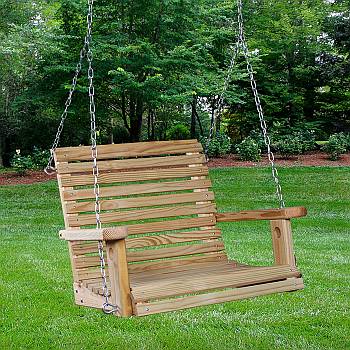
Tire Swing
As kids grow older, their needs and abilities change. Keeping your backyard swing set updated with accessories that meets your kids’ current needs and interests will ensure that the swing set continues to be used and enjoyed over the course of many years. There’s no need to completely overhaul your swing set at one time, though. Start with one improvement and see how that goes before adding or changing anything else. Swings are a good place to start.
How old were your kids when you first purchased their backyard swing set? Were they young enough to need a bucket swing or half-bucket swing for safety? Updating the swings on your swing set is an easy and inexpensive way to keep the kids coming back out to play. Instead of buying a new standard belt swing, though, choose a swing with some zing.
zing.
Some popular alternative choices for traditional swings include tire swings and glider swings, both of which can support at least two people at a time. A disc swing is another fun option that, like the tire swing, is not limited to just a back and forth movement. For older kids and even adults, a wooden chair swing is an appealing spot for swinging gently while chatting with a friend or reading a book.
Getting the most use out of your backyard swing set means that a little updating of the accessories now and then is necessary. Keep up with your kids’ interests as they grow and change, and you’ll keep them coming back to play.











